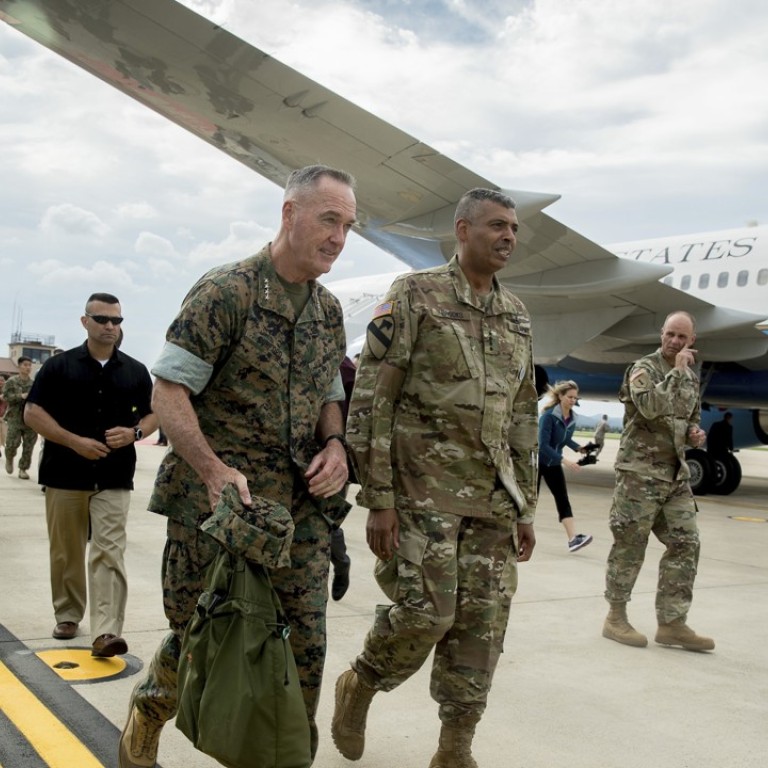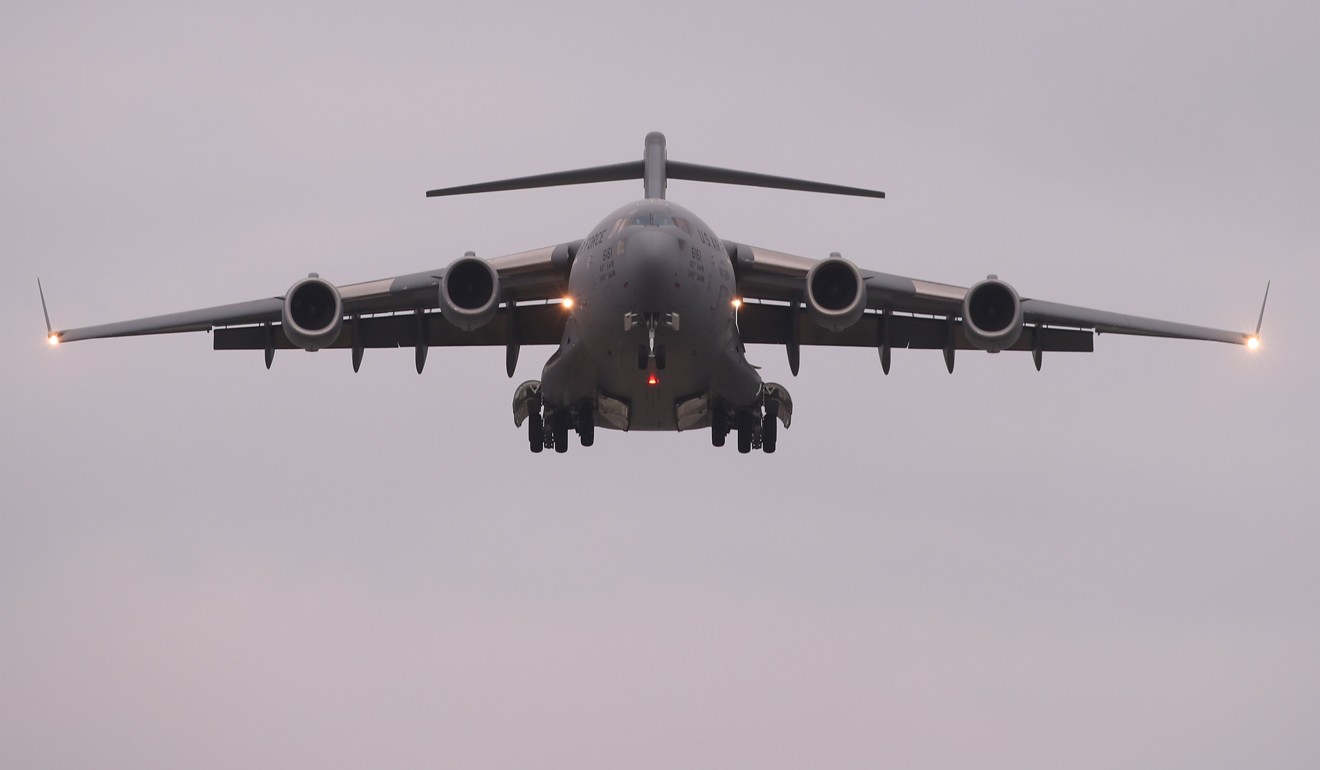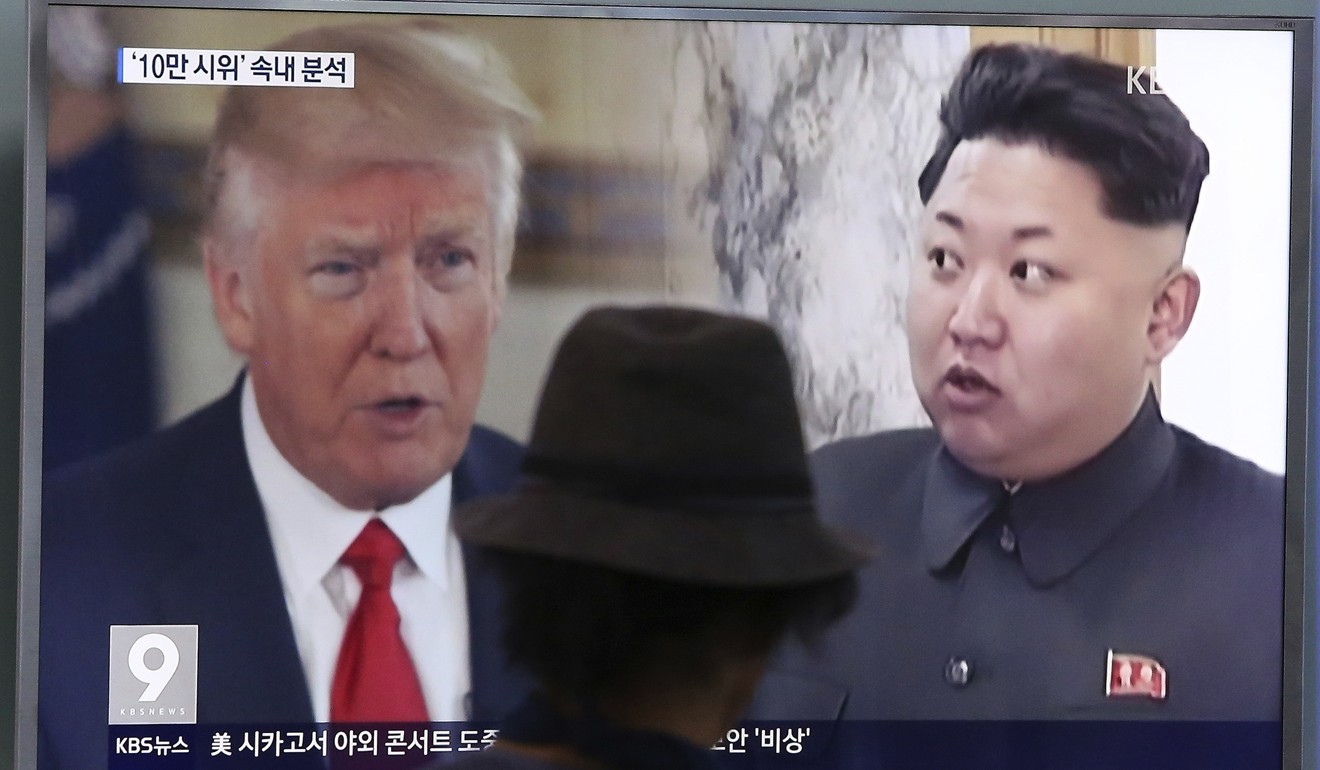
Top US general to meet South Korea’s President Moon amid tensions with North
America’s top general plans to meet South Korean President Moon Jae-in on Monday, just days after his counterpart Donald Trump said a military solution to the North Korea missile crisis was “locked and loaded”.
General Joseph Dunford, chairman of the US Joint Chiefs of Staff, will meet senior military officials along with Moon, according to an official with South Korea’s Blue House who asked not to be identified. He will head then head to China on the previously scheduled visit, Yonhap News Agency reported, citing an unidentified military official.
Dunford’s Asia visit comes as fears grow that a war of words between Trump and North Korean leader Kim Jong-un will lead to a miscalculation that sparks an actual military conflict. In a call with Trump on Saturday, President Xi Jinping called for all sides to maintain restraint and avoid inflammatory comments.
A tweet from the joint chiefs on Sunday showed him arriving at Yokota Air Base in Japan.

The US hasn’t taken any public steps to prepare for hostilities such as evacuating Americans from Seoul, which is within range of North Korean artillery, or moving ships, aircraft or troops into position for an imminent response. The US has about 28,500 troops stationed in South Korea.
Some analysts expect further escalation in the coming days as North and South Korea celebrate the August 15 anniversary of the end of Japan’s occupation of the Korean peninsula and Seoul conducts joint military exercises with the US from August 21. Japan is also holding annual drills with the US over the next few weeks.

North Korean media on Sunday condemned the planned military drills and said the US is “letting out dangerous war rhetoric” and Trump’s “wild remarks” are causing concern and anger in South Korea.
Moon’s administration has pushed to start talks with North Korea even while looking to strengthen its defences. On Sunday, Deputy Unification Minister Chun Haesung said South Korea was seeking to ease tensions and the door for dialogue with North Korea was still open.
Dunford said last month that it was “unimaginable” to allow North Korea to develop the capability to strike a US city with a nuclear weapon.
More recently, Defence Secretary James Mattis has sought to reassure US partners in the region. He said on Thursday that the US works closely with its allies to ensure that any military response wouldn’t be unilateral, warning that the impact of a conflict “would be catastrophic”.

Trump has continued to take an aggressive tone on North Korea. On Friday, Trump said if Kim makes any “overt threat” or strike at a US territory or ally “he will truly regret it and he will regret it fast”. Trump also said the US was considering tighter sanctions against North Korea.
“Hopefully it will all work out,” he told reporters in Bedminster, New Jersey. “Nobody loves a peaceful solution better than President Trump.”
China, North Korea’s main benefactor, agreed to harsh United Nations sanctions earlier this month even while calling on all sides to take a step back and negotiate a solution.
Trump’s posture suggested he was trying to dissuade Kim from further provocations rather than setting the stage for a US military strike, according to Terence Roehrig, a national security affairs professor at the US Naval War College in Newport.
“The president’s rhetoric could be aimed at China, but largely it is aimed at North Korea, trying to deter,” Roehrig said. “North Koreans are not suicidal. They may continue launching missile tests but they don’t want a war, and the US doesn’t want military action either.”

